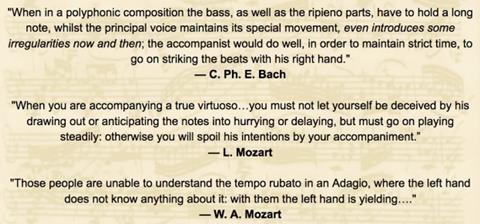Ahead of his 2020 album release of Bach’s Sonatas and Partitas, the violinist continues his blog series, in which he discusses the contradictions between the opposing trends and traditions in Bach interpretation, and his personal solutions to them
Last week Cotik discussed Overdotting and Rhythmic Assimilation. This week he focuses on Tempo Rubato, Strong and Weak Measures and Notes Inégales.
Tempo Rubato
From the Italian for ‘stolen time,’ tempo rubato refers to the characteristic fluctuation in time and is mentioned in various treatises. The time that is ‘stolen’ from one place will, in most cases, be ‘given back’ at another point. We can compensate for taking time by pushing forward later to balance things out, or sometimes we can simply take the time without giving it back.

A good exercise to get used to the many possibilities and to increase your temporal flexibility is to alternate playing one slow beat with one fast beat as you play though the score. Then, do the same with successively bigger units (half bars, then bars, then groups of bars). Eventually, combine and mix the units. Can you conceive a rallentando during an overall accelerando? Therein lie the beginnings of tempo rubato.
Strong and Weak Measures
Strong-weak metric units, the origins of which can be found in chant, are mentioned in many treatises. They are also referred to as ‘good/bad’ or ‘principal/passing.’

These strong notes produce a metric accent that is best explained in L. Mozart’s own words:

Notes Inégales
A noticeable aspect of French performance is the practice of rhythmic inequality (notes inégales). In French dance music, it is typical that the decorative note values are played in a flexible way; usually by lengthening the value of the decorative notes on the beat and shortening the ones off the beat. However, the opposite (Lombardic) rhythm with the short note on the beat can be also used. The more sophisticated the music is, the more subtle and varied this practice becomes. The inequality procedure was virtually eliminated by fast tempos, however, which characterized most French dance music. There is no firm evidence that this kind of inequality was ever adopted by Bach. It is also important to note that to a certain degree, notes inégales, strong versus weak notes, metric accents, and tempo rubato are resources that often overlap.
Next week Cotik concentrates on Ornaments, Trills and Appoggiaturas.
Tomás Cotik performs Bach’s Chaconne
- 1
- 2
- 3
- 4
 Currently reading
Currently readingHow I interpret Bach: Tomas Cotik on Tempo Rubato, Strong and Weak Measures and Notes Inégales
- 5
- 6
- 7
- 8
- 9
- 10
- 11





















































No comments yet